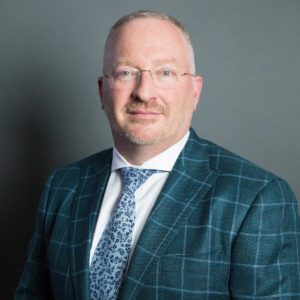
While struggling rural nursing homes must innovate to survive, their efforts would be bolstered by a federal program similar to one that provides additional funding and staff resources to challenged rural hospitals.

So says Mark McKenzie, CEO of Focused Post-Acute Partners, which operates 30 skilled nursing communities in Texas. Twenty of those are in rural areas, some in towns with as few as 3,000 residents.
McKenzie has spent more than 30 years in long-term care, a period that included nearly eight years at the helm of Senior Care Centers of America. During that time, he has seen a major shift in the costs of operating rural skilled nursing facilities, complicated by reimbursement that has failed to keep up with increased patient complexity. Add in a staffing crisis that has made costs explode, and many of his colleagues are questioning how they’ll keep their doors open.
“When we talk to our legislators and the public, there’s still that assumption that if you’re in a rural market, your cost of doing business is significantly less than what it is in your major metropolitan areas,” McKenzie told McKnight’s Long-Term Care News this month. “That just isn’t true, and our payroll bears that out …To get someone into our rural markets, you have to sweeten the pot and that’s in their pay and their benefits.”
Facilities operated by Focused have struggled with staffing since before the pandemic, especially as the oil and gas boom in the late 2010s encouraged many families to relocate closer to the oil fields. But where Focused once had open shifts averaging 8% to 10%, those peaked at up to 30% during the pandemic and remain elevated.
With census suppressed at some buildings, he and many of his rural peers are having hard conversations as to whether a real turnaround will ever be possible for all.

He’s trying to innovate from within — adding nurse practitioners and exploring specialty programs and staff sharing with local hospitals — McKenzie believes the federal government should step in to level the playing field for operators in rural states.
He is calling for a program similar to that for so-called Critical Access Hospitals. Congress adopted the designation in 1997, following a rash of more than 400 rural hospital closures during the 1980s and early 1990s. It aims to reduce the financial vulnerability of and improve access to care in hospitals that are small, whose absences would leave a void in their community and those that don’t typically keep patients for extended lengths.
“If you’re a rural access hospital, you get additional funding regardless of your patient load so you have access for people in those underserved markets,” said McKenzie. Many of the conditions that led to the creation of the Critical Access Hospital designation are now occurring in the skilled nursing sector, he added.
“It’s not just the dollars, but how do they get them the expertise that they need? The doctors in those markets, the specialists, the therapists in those markets. Those are all the same things we use in a post-acute care setting, that no one seems to think of,” he said.
Rural pressures build
Many rural providers have not seen significant Medicaid hikes in years, increasing operating pressures.
Rural areas in Maine, Montana and Nebraska have reported clusters of nursing home closures this year, and the pressures are affecting even the largest of providers nationally. A report from CliftonLarsonAllen earlier this year found that high Medicaid census and lower margins — both common among rural facilities — were tied to a high number of nursing home closures in 2022.
Focused grew quickly from 11 to 30 buildings, all before the company celebrated its third anniversary in February 2020. It has so far had one closure, in a market where it has several other facilities.
After investing $3 million in capital projects, McKenzie turned to local hospitals to better understand their needs in each market. Focused trained staff and revised policies, such as discharge planning, to better align with those partners, and he upgraded an EHR system and added other technologies to improve workflow and resident outcomes.
As he had at Senior Care, McKenzie said he wanted to bring over systems from metro facilities that would make sense to transfer.
“We started at Focus Care with that same process: working with our rural hospitals, working with our rural based physicians. One, what is it that we need? What isn’t here? And how do we get it here?”
His first major goal was to improve clinical prowess by adding a consulting physician or nurse practitioner in each building for a minimum of 20 hours a week. They were easiest to hire at facilities closer to cites; the clinicians were already available through local practices. But after hiring a couple, McKenzie began networking and trying to convince others to drive 30 minutes to facilities that were in more rural locations.
“We viewed them as part of our staff and it also helped with having that higher level of knowledge floating in the building that our buildings in a rural market often don’t enjoy,” he said. “They often don’t enjoy it because in many markets, those people just aren’t there. You have to get them imported somehow.”
The company was on a “steady march” to have NPs in place in all buildings by the end of 2020, but then COVID hit and stopped the rollout in its tracks.
More than two years later, Kenize hopes to resume hiring in early 2023, if there are no late-2022 COVID surprises.
“That was going to be one or lead differentiator in terms of the clinical market,” he said. “But more importantly, in some of our rural markets, we’re the only healthcare environment or facility in that city.”
Becoming indispensable
Being able to bring knowledge in geriatric care and other specialties can make skilled nursing indispensable to rural residents, McKenzie believes. But nursing homes also play a key role in keeping key hospitals in business.
Senior care organizations may be the No. 1 referral source for many rural hospitals, McKenize said. So it makes sense that they should get equal support as they work together for the healthcare betterment of their small communities.
As an extension of that symbiotic relationship, McKenzie is working to hammer out a staff-sharing arrangement with one local hospital partner. Details aren’t final. But the goal is to let hospital nurses pick up full-time hours, helping the hospital avoid attrition, while McKenzie helps with cost-sharing and pays for hours worked at his facility, still undercutting the rate agency is charging.
The end result could be increased clinical knowledge among his nursing staff and nursing continuity for patients who use both the hospital and the nursing home.
McKenzie believes improved permanent Medicaid rates in Texas — where they haven’t budged since 2014 — could help address staffing issues more broadly. But he’s not pinning his chain’s success on hopes for the next legislative session. Instead, he’s advocating for more federal support while continuing to invest in smart measures that promise better quality for patients.
“I believe we have an obligation as an industry to make sure rural patients get the same level of care, and I’m not just talking about the care at bedside between a nurse and a nurse aide and your local physician. I’m talking about all the other benefits that if you happen to live in a large metropolitan market, you have,” McKenzie explained. “Yes, it’s a little more difficult to figure out how to triage it or bring it together, but I always thought we should be able to have it.”




